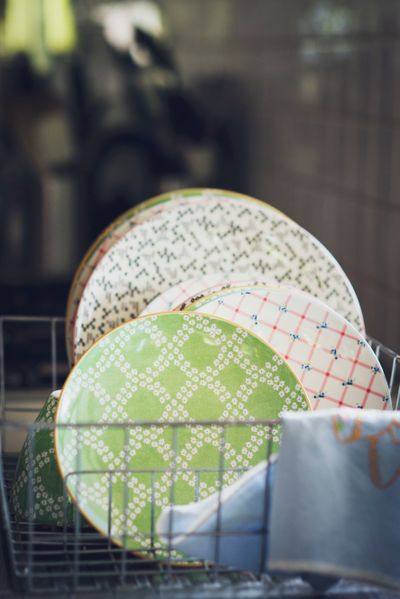Here’s how to clean those grimy, easily ignored spots in your kitchen

In the decade I’ve lived in my house, my kitchen has never been worked so hard as now. Three meals a day for three people, seven days a week, plus snacks (human and canine), in addition to recipe testing for whatever I publish here. I do my best to keep things neat-ish, especially when it comes to the more obvious spots – the oven, microwave and counters. But there are certain places that are easy to overlook. Here are a few to add to your cleaning regimen.
The mat underneath your dish rack. Are you like me, and there’s almost always something in your dish rack? Every so often, get everything out so you can actually give the mat where the water drains some attention, too. You may be able to pop it in the dishwasher. Otherwise, give it a good scrub in the sink.
The grease filters above your cooktop. Read the manual to see how to remove them, as well as for any specific cleaning tips. GE, for example, recommends soaking and swishing them in a mix of hot water and dish soap, using a brush as needed. The Kitchn offers a tutorial as well, which includes baking soda. Some filters are dishwasher-safe, though discoloration may occur.
That bit of floor underneath your cabinets. My cabinets have an overhang above the floor, and this is where crumbs (and stray grains of rice, beans, anything really …) love to lurk. Even if you’re regularly vacuuming or sweeping your floors, you may be missing the food right up against the cabinetry if your tools don’t quite fit or you don’t bend down to look. One of the smaller attachments on my vacuum is great for getting every last piece.
Underneath the produce drawers in your refrigerator. Since they’re at the bottom, “This is where all drips and spills in your fridge go to die,” says Melissa Homer, chief cleaning officer of cleaning service MaidPro. She suggests pulling the drawers all the way out, spraying the exposed area with disinfecting all-purpose cleaner and scrubbing with the coarser side of a kitchen sponge until any caked-on food is gone. Do one more round of spraying and take a pass with a microfiber towel. Now would also be the time to clean the inside and outside of the drawers.
The crumb tray of your toaster oven. It can be hard to remember to do this until you start to smell something burning, so try to be more proactive. Homer recommends emptying the tray over a trash can every other time you use it. For more stubborn messes, clean the tray with dish soap and water. Dry it thoroughly before putting it back.
Gaps between the stove and counters. “Drips and splatter love to fall down the sides of the stove, making those gullies a gross receptacle for rotting food bits that generates odors and attracts infestations,” Homer says. “To clean it, dampen a microfiber towel with disinfectant all-purpose cleaner. Hold it out taut by the corners with two hands and run it through the cracks on each side of the stove every time you clean the stove top.” Then check the floor with a flashlight to look for any other debris. If it needs work, use the same towel strategy, but secure with rubber bands to a flattened wire hanger to get hard-to-reach spots.
The dishwasher filter or strainer. This trap catches whatever food is washed off the dishes. “If you forget to clean it, it can smell and get clogged and spit food bits back on your dishes,” Homer warns. Each model is different, so read the manual. Homer says the process typically involves locating it under the spinner (pull out the lower dish rack first) and twisting and lifting it out. Wash with soap and water in the sink.